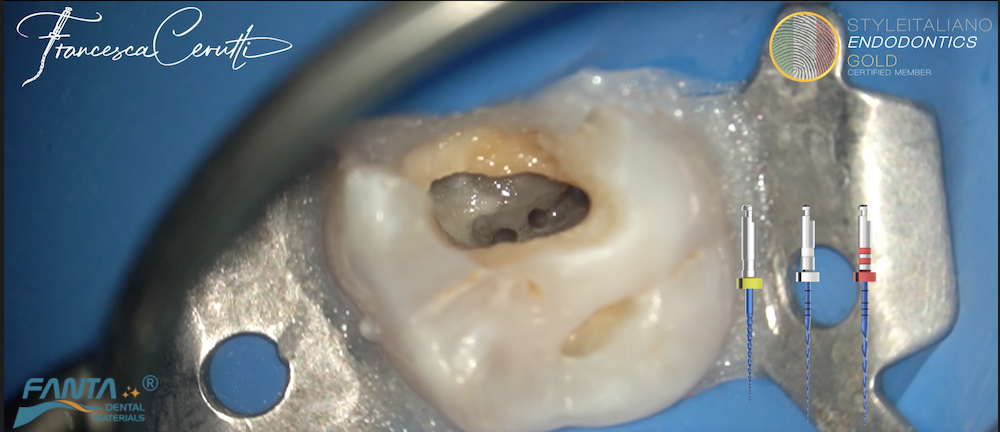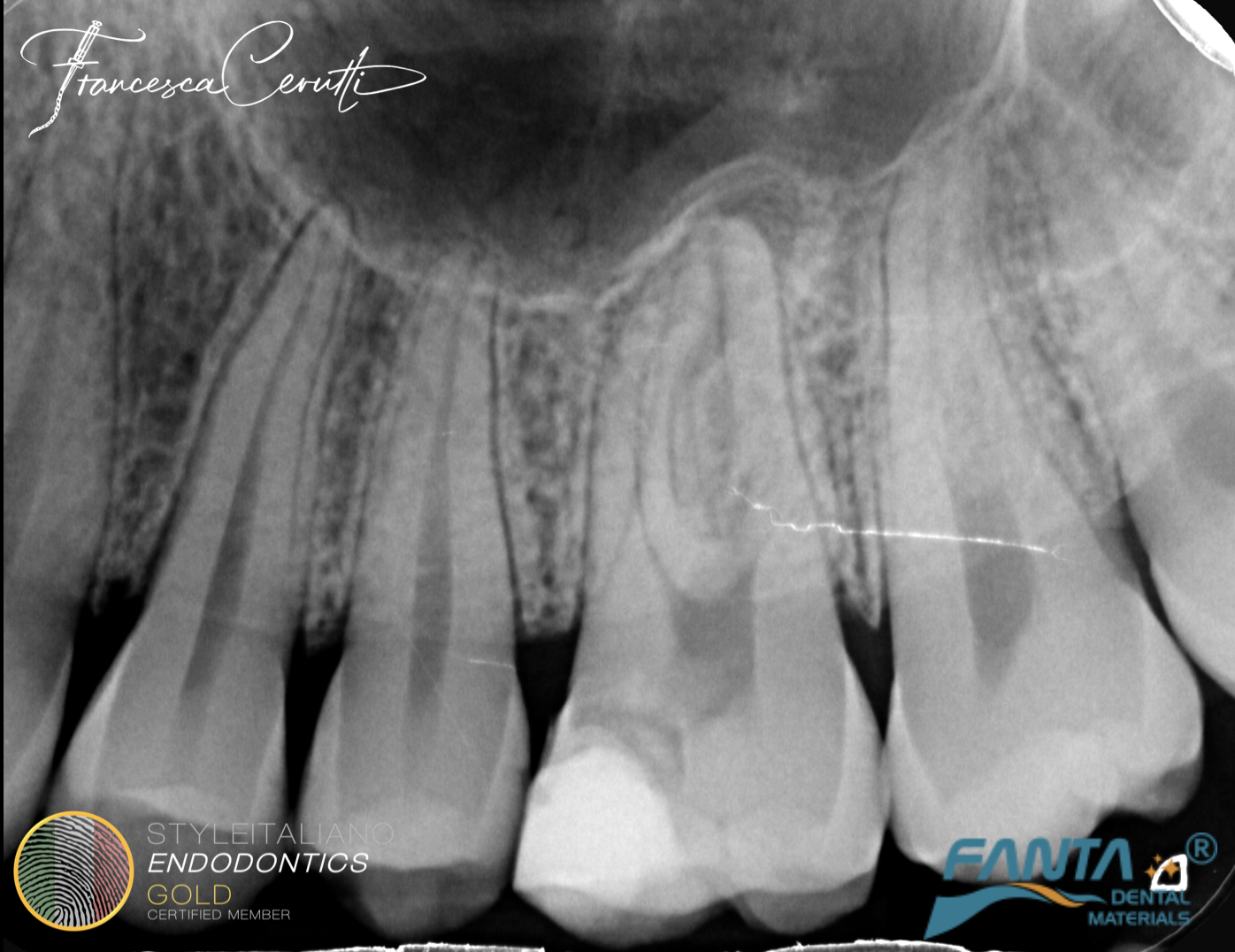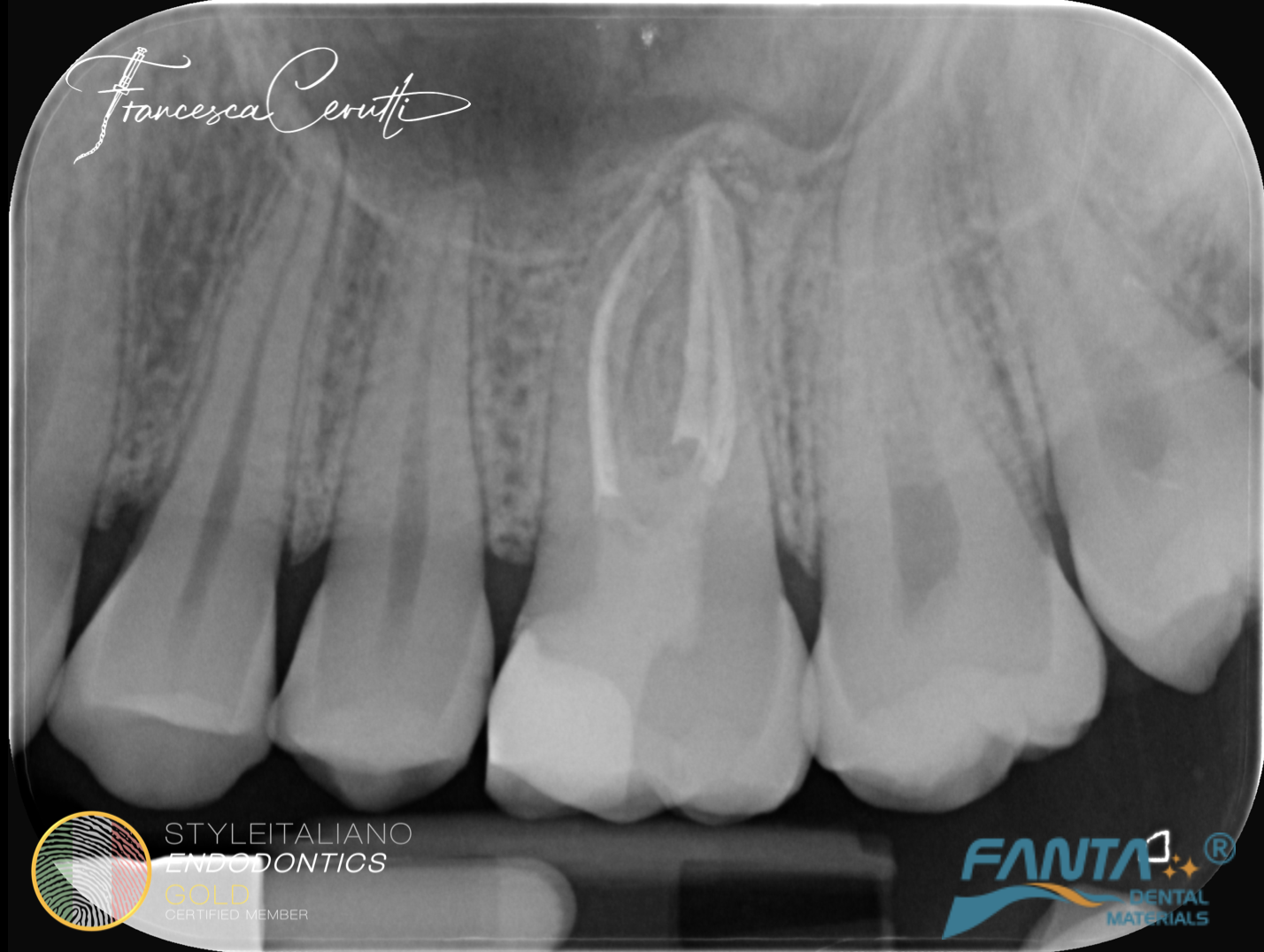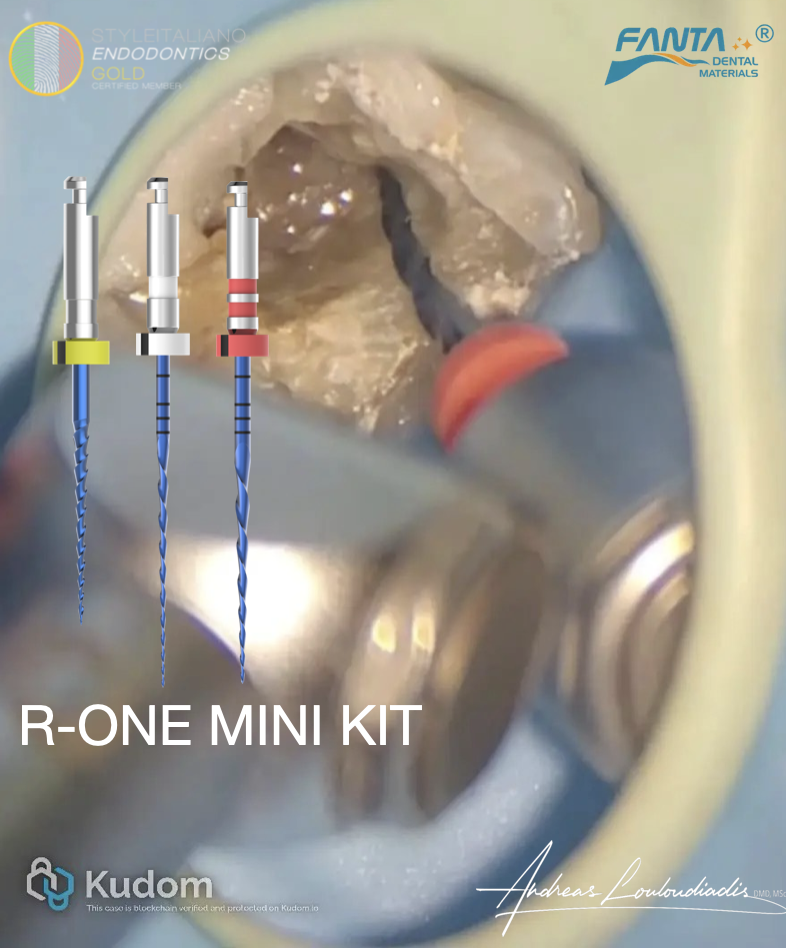
Conservative and safe shaping with R One Mini
02/06/2025
Francesca Cerutti
Warning: Undefined variable $post in /var/www/vhosts/styleitaliano-endodontics.org/endodontics.styleitaliano.org/wp-content/plugins/oxygen/component-framework/components/classes/code-block.class.php(133) : eval()'d code on line 2
Warning: Attempt to read property "ID" on null in /var/www/vhosts/styleitaliano-endodontics.org/endodontics.styleitaliano.org/wp-content/plugins/oxygen/component-framework/components/classes/code-block.class.php(133) : eval()'d code on line 2
Modern endodontics emphasizes the importance of preserving natural tooth structure while achieving effective canal debridement. Conservative shaping of the root canal system is essential to maintain the original canal anatomy, reduce the risk of structural weakening, and enhance long-term tooth survival. Excessive removal of dentin, especially in curved or narrow canals, may predispose the tooth to vertical root fractures or compromise its biomechanical integrity.
Reciprocating instrumentation has emerged as a valuable approach in achieving these conservative goals. By utilizing an alternating clockwise and counterclockwise motion, reciprocating systems minimize torsional stress on both the instrument and the dentinal walls. This technique reduces the risk of instrument separation and allows for efficient negotiation of complex canal anatomies.
Furthermore, reciprocating files are typically designed to require fewer instruments per treatment, simplifying the workflow and reducing chair time. Their flexibility and cutting efficiency enable clinicians to achieve a centered and conservative preparation, promoting better irrigation and obturation outcomes.

Fig. 1
Basing on these concepts, Fanta Dental developed, in collaboration with the Sapienza University of Rome, a kit of files called R One Mini.

Fig. 2
The first instrument of the kit is an opener, .19/05, with a variable taper and a S shaped cross section. The file has a high number of flutes in order to enhance the cutting action and at the same time its flexible alloy makes it working gently in the most coronal part of the canal.

Fig. 3
This file is a .17/04 and is used as a first shaper, made by AF-L alloy. This alloy is a little less martensitic than the one of the previous instrument, guaranteeing a higher cutting efficiency. The small size of the instruments will make it flexible nevertheless.
It can be used in reciprocation or continuous rotation.

Fig. 4
The last file of the sequence is a .25/06 in AF-R alloy: this medium martensitic alloy makes the file flexible but also with a good cutting efficiency and a good resistance to torsional stresses.

Fig. 5
A young patient came to my practice complaining about pain when chewing on the upper left first molar. A periapical lesion was evident.
I decided to perform a caries driven access in order to preserve as much as possible the sound dental tissue and I chose to have the same approach for shaping.
Video of the procedure

Fig. 6
Post operative
Conclusions
Conservative shaping combined with reciprocating instrumentation by R One Mini offers a synergistic approach to safe, effective, and biologically respectful endodontic therapy, aligning with the principles of minimally invasive dentistry.
Bibliography
-
Plotino G, Grande NM, Testarelli L, Gambarini G. Cyclic fatigue of Reciproc and WaveOne reciprocating instruments. Int Endod J. 2012;45(7):614–618.
-
Gavini G, Caldeira CL, Akisue E, Candeiro GTM, Kawakami DAS. Resistance to flexural fatigue of Reciproc R25 files under continuous rotation and reciprocating movement. J Endod. 2012;38(5):684–687.
-
Krishan R, Paqué F, Ossareh A, Peters OA. Impacts of conservative endodontic cavities on root canal instrumentation efficacy and fracture resistance of teeth. Clin Oral Investig. 2014;18(2):579–584.
-
De-Deus G, Moreira EJ, Lopes HP, Elias CN. Extended cyclic fatigue life of F2 ProTaper instruments used in reciprocating movement. J Endod. 2010;36(9):1585–1587.




